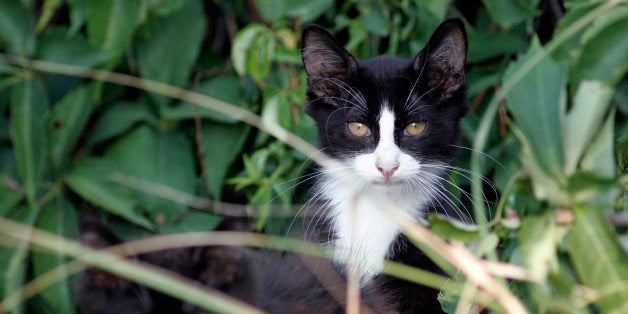
It sounds like a headline ripped straight from The Onion: “Survey: More than 1K cats near Maui bird sanctuary.”
But this is no Sylvester and Tweety Bird situation. The growing feral cat population on the Hawaiian island of Maui has wildlife biologists concerned as more and more of the cats crowd around the Kanaha Pond State Wildlife Sanctuary -- a bird sanctuary where endangered species such as the Hawaiian duck, Hawaiian coot and Hawaiian stilt nest.
On Sunday, biologist John Boone presented results of the first study done on Maui to map and count how many cats they might be dealing with. Because around 1,100 feral cats live in Kanaha Beach Park, which is adjacent to the sanctuary, Boone said the area needs “serious management attention.”
In the past, it’s been estimated that anywhere between 20,000 to half a million cats roam the 727-square-mile island, a wide range that Inga Gibson, the Hawaii director for the Humane Society of the United States, said was a main reason for assigning the study. To organize a more precise mitigation plan, she told The Huffington Post, “We really needed to get an idea of the numbers.”
The Department of Land and Natural Resources on Maui calculated that if a single unspayed female cat produces 2 litters per year, with 2.8 cats surviving each litter, she and her offspring can create 11.6 million cats over a nine year period.
Programs such as TNR (or trapping, neutering and returning the cat to the same place) have been effective in other formerly-infested areas. At one time, Iao Valley had 650 cats, according to cat colony manager Jody Sparks, but researchers say only 125 live there now.
Gibson told HuffPost that the cats are just doing what cats do -- it’s not their fault. “This is really a community issue,” she said. “There’s a common phrase we say that cats can be managed, but it’s the humans that are the hardest. Human behavior creates these problems.”
She is urging the community to never abandon an animal. “There’s a lot of things that people can do, whether by fostering or adopting an animal, or volunteering to help with management ... There’s no quick fix, but we’re confident we can at least stabilize the population.”
As for the birds, researchers say the cats could devastate the bird population if the sanctuary doesn't keep up with management. Scott Fretz, the Maui branch manager of the state's Department of Land and Natural Resources, told HuffPost that cats do make it over the sanctuary's fence, but the DLNR is catching and removing them.
"It's been a problem for some time," Fretz said, acknowledging that cats do get the birds once in a while.
Thankfully, so far, he says, "We've been able to keep a stable population of the birds."

